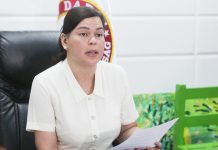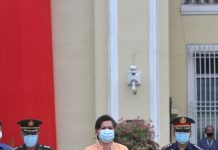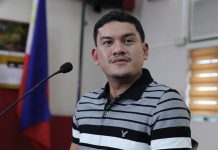DAVAO River is proposed as a water quality management area (WQMA) by the Environmental Management Bureau (EMB-11) in line with Republic Act No. 9275 or the Clean Water Act of 2004.
In a meeting with barangay officials and other concerned sectors December 12 at the Grand Men Seng Hotel, EMB-11 discussed the criteria for the selection of WQMA as spelled out In RA 9275.
WQMA is one of the approaches identified to protect water quality from pollution which creates economic and financial losses to the country.
EMB regional director Metudio U. Turbella said under RA 9275, the Department of Environment and Natural Resources (DENR) through EMB is mandated to designate certain areas as WQMA using appropriate physiographic units such as watershed, river basins or water resources regions.
Turbella further said that the coverage of such designation include: surface waters, either natural or man-mad,e such as streams (rivers and creeks), lakes as well as marine waters and land within the hydrologic unit such as residential, commercial, industrial, agricultural, forest and protection areas. “We will be conducting a series of consultations with various stakeholders in line with the proposed WQMA. This first meeting is one of the things we need to do, aside from the data gathering activities and the creation of the Governing Board”, Turbella added.
To date, EMB has nine water monitoring stations established located at the mouth of Davao River, Bolton Bridge, Bankerohan Bridge, Marfori Heights, San Rafael Bridge, Bacaca, Riverwalk Crocodile Park, Maa Bridge (Diversion Road) and Waan Bridge.
The water quality of Davao River from 2006 to 2010 is classified as Class B- Downstream Stations 1-4 (mouth of the river, below Bolton Bridge, Below Bankeroha Bridge and Davao River, Diversion Bridge, Maa) and Class A – upstream stations 5 and 6 Davao River at Mandug area and Davao River approximately 800 meters downstream from the confluence of Tamugan River. These classifications are based on the parameters monitored such as temperature, pH, Dissolved Oxygen, Biological Oxygen Demand (BOD), total suspended solids and total dissolved solids.
Class A or Public Water Supply Class II are sources of water supply that will require complete treatment (coagulation, sedimentation, filtration, disinfection) in order to meet the NSWD Standard. Class B or Recreational Water Class I are for primary contact recreation such as bathing, swimming and skin diving or particularly those designated for tourism purposes.[BING CORDOVA/DENR 11]
0 Comments
Oldest






